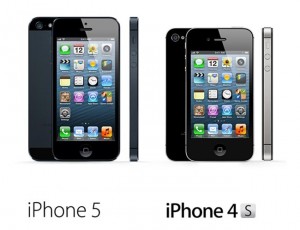 The revamped model of iPhone 5 has been introduced into the market and what new does Apple have to offer its users, is the question. Does Apple have anything more to say apart from stating that the iPhone 5 is a lot faster than the iPhone 4S?
The revamped model of iPhone 5 has been introduced into the market and what new does Apple have to offer its users, is the question. Does Apple have anything more to say apart from stating that the iPhone 5 is a lot faster than the iPhone 4S?
The iPhone 5 is clearly twice as fast as the iPhone 4S, owing to the A6 chip used in it, as opposed to the A5 chip used in the latter model. This is sure to improve the graphic performance of the phone. As confirmed by analysts, the A6 incorporates the Cortex-A15 design produced by ARM, solely responsible for powering leading smartphones in the market. By integrating 2 ARM Cortex-A15 cores, Apple has managed to introduce the A15 design into the market, beating Samsung and Texas Instruments while at it. The A6 chip has been placed with the 28-nanometer MDM9615 LTE, a single chip nanometer manufactured by Qualcomm.
The graphics processing unit utilizes four Imagination PowerVR SGX543 cores, therefore increasing the GPU core count twice as much as available in the earlier version of the iPhone. Apple is also all set to offer improved performance, yet maintain a decent battery life, upon having made suitable changes outside of the CPU of the system, by beefing up the peripheral cores. Therefore, going by Apple’s claims, one can easily use the internet for a duration of 8 hours on 3G or 4G or on the Wi-Fi for 10 hours, irrespective of the fact that 4G LTE is usually known for causing a strain on the battery life of smartphones. Apart from LTE and HSPA, the iPhone 5 is also supported by EDGE, HSPA+, EV-DO and DC-HSDPA. Though the Wi-Fi switches over to dual-band 5GHz 802.11a/b/g/n and 2.4GHz, with the help of 20MHz channels, one can access link rate of 150 Mbps through Wi-Fi. Some other updates could possibly include the system DRAM chips and the upgraded version of the NAND flash memory.
Alongside the iPhone 5, upgrades were introduced in the iPod Touch as well. This included upgradation to dual core A5, a chip currently used in the iPad 2 and iPad 4S, doubling up the processing power and increasing the graphics performance by seven times, a vast improvement from the chip previously used in the iPod Touch.